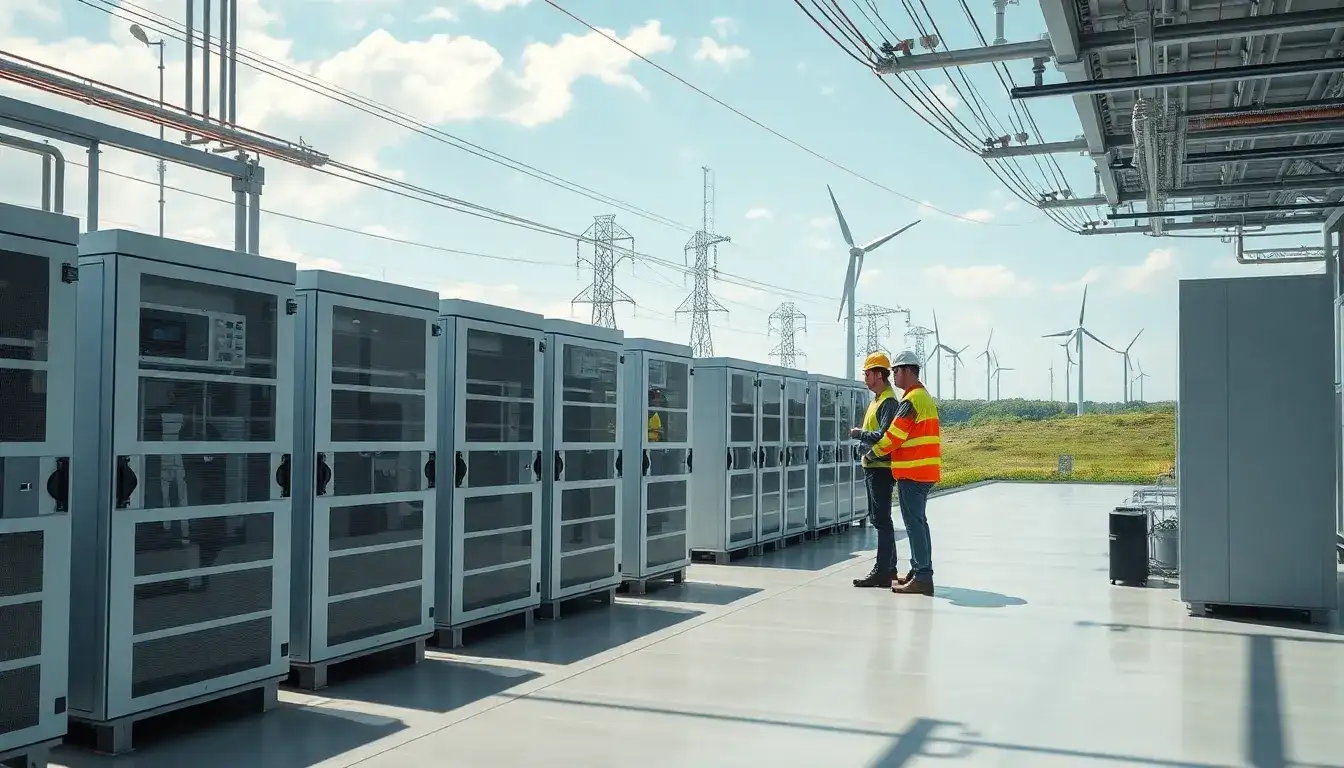
In the evolving landscape of energy management, electric grid operators are grappling with the challenge of balancing reliability with unprecedented demand growth. Despite the effectiveness of traditional demand response programs over the past few decades, the ongoing integration of renewable energy sources and the increasing frequency of extreme weather events necessitate more sophisticated solutions. In this context, energy storage systems have emerged as a vital tool in this transformation, providing a more dynamic and reliable approach to demand management.
Traditional demand response programs mainly rely on utilities controlling industrial loads, voluntary load reductions from consumers, and incentive mechanisms like time-of-use pricing. However, these methods are increasingly facing challenges due to limited flexibility and rising complexity, prompting utilities to actively seek more intelligent solutions. The paradigm is shifting from basic load reduction to smart, automated grid management.
Energy storage systems can respond instantaneously to grid signals, enabling precise load management while ensuring that normal operations for end-users are not disrupted. According to a report by consulting firm Wood Mackenzie and the American Clean Power Association, the United States deployed over 3 GW/10.5 GWh of energy storage systems in the second quarter of 2024, marking significant increases of 74% in installed capacity and 86% in storage capacity compared to the second quarter of 2023.
When strategically deployed, these energy storage systems can offer sub-second response times for demand management, frequency regulation, and voltage support, a capability that traditional demand response programs cannot match. This shift in strategy comes at a crucial time, as grid operators across North America report that traditional demand response programs are struggling to meet reliability demands due to increasingly extreme weather patterns.
In the summer of 2024, several large utility companies faced record peaks in electricity demand, overwhelming traditional demand response programs and leading to controllable outages in some regions. In contrast, utilities with integrated energy storage systems exhibited significantly greater resilience. For example, Rocky Mountain Power plans to deploy a 213 MW energy storage system between 2025 and 2028 to enhance its responsiveness to electricity demand, aiming to ensure service for critical facilities and improve customer satisfaction.
This approach helps defer costly infrastructure upgrades and reduces electricity purchases during peak periods, thereby contributing to stable pricing. The key lies in combining energy storage technology with advanced control systems. Digital platforms can integrate thousands of distributed generation facilities into a virtual power plant (VPP), offering unprecedented flexibility in electricity demand management.
Energy storage systems automatically optimize their charging and discharging processes based on real-time grid conditions, weather forecasts, and market signals, thereby ensuring grid stability while helping utilities avoid expensive capital investments and reducing reliance on peaking power plants. According to the U.S. Department of Energy’s Virtual Power Plant Business Operations Plan, VPPs are crucial for addressing the challenges facing the grid. The Department noted that the VPPs deployed in North America have grown to 33 GW and are expected to rapidly increase to between 80 GW and 160 GW by 2030. This growth could meet 10% to 20% of the peak load demand in the U.S. while lowering overall grid operating costs, with projected savings of around $10 billion in capital expenditures per year during this period.
Rocky Mountain Power’s Wattsmart Battery Program exemplifies this transition, recognized by the U.S. Department of Energy as a leading VPP initiative. By integrating distributed energy storage systems, the company has created a responsive virtual power plant capable of providing grid services at a lower cost. Analysis from the Department of Energy indicates that procuring peak demand capacity from a VPP can reduce utility costs by 40% to 60% compared to alternatives like large-scale batteries or natural gas peaking plants, while also delivering direct value to participating customers.
Looking ahead, as utility companies strive to achieve decarbonization goals, combining energy storage systems with demand response will become increasingly important. Energy storage systems facilitate greater integration of renewable energy and provide zero-carbon alternatives to traditional peaking power plants. For utilities leading this transformation, successful implementation will require a keen focus on system integration, market design, and refining regulatory frameworks. Energy storage systems must seamlessly integrate with existing Distributed Energy Resource Management Systems (DERMS) and appropriately assess the diverse services supported by energy storage.
The shift towards demand response through energy storage systems is not merely a technical upgrade; it represents a fundamental change in grid management. As the industry evolves and technology advances, those companies that actively embrace this integration will be better positioned to tackle future challenges while delivering enhanced services and value to their customers.







